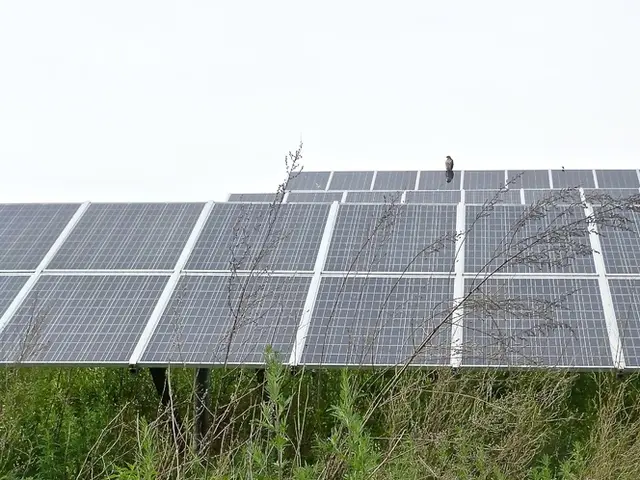Solar cells transform sunlight into electricity, harnessing solar energy for power generation.
Solar cells, the fundamental component of photovoltaic systems, have been at the forefront of technological development for several decades. These devices convert sunlight directly into electrical power, playing a crucial role in the transition towards renewable energy sources.
The first silicon solar cell was presented by Bell Laboratories in 1954, achieving an efficiency of 4 percent. Since then, the ongoing advancements in solar cell technology have led to higher efficiencies and a significant reduction in the cost of solar plants. Prices for photovoltaic systems have fallen by almost 80 percent since 2006, and by an average of 5.5 percent per year since 2013. The average price per kilowatt peak (kWp) for solar plants has fallen from around 2,300 euros in 2012 to just under 1,300 euros per kWp by 2022.
Solar cells are made of semiconductor materials, with silicon being the majority used material. Monocrystalline solar cells, made of pure silicon, have a high efficiency, but are more complex and expensive to manufacture. Modern monocrystalline solar cells achieve an efficiency of 20 to 22 percent. On the other hand, polycrystalline solar cells consist of many silicon crystals of different sizes, have slightly lower efficiency, but are less expensive to manufacture.
Thin-film solar cells have an amorphous, non-crystalline structure, are less resource-intensive, and allow for lower costs, but their efficiency is slightly lower. Perovskite solar cells are inexpensive to manufacture, have a high efficiency, but are very sensitive to environmental influences, especially moisture and heat. Another promising approach are tandem solar cells, which consist of multiple layers of different materials stacked on top of each other to achieve higher efficiencies.
PERC solar cells, an improvement on traditional silicon solar cells, have an additional reflective layer on the back to improve efficiency, especially in the morning and evening hours. However, they lose performance more quickly. Organic solar cells, based on organic compounds, are flexible in shape and application, and can be used in areas with less optimal light conditions, but their efficiency can still be improved.
The generated direct current must be converted into alternating current using an inverter for use in the public power grid. The sun provides more energy every hour than the entire world population consumes in a year. To use solar cells for power generation, they must be mounted in a frame, protected with a glass cover, and connected to a main line.
Solar thermal systems, another type of solar installation, heat water through direct sunlight for water heating and to support heating systems. The development of solar cells and energy storage systems is a significant area of investment, as the world continues to strive for a more sustainable and renewable energy future.
Advanced protective measures are necessary to meet the challenges posed by perovskite solar cells, due to their sensitivity to environmental influences. The first solar power plant in Germany was put into operation in 1983, and today, Germany boasts over 5 million installed photovoltaic systems.
In conclusion, the advancements in solar cell technology have led to a more affordable and efficient means of harnessing the power of the sun. As the world continues to invest in renewable energy sources, the future of solar power looks bright.
For more exciting news, don't forget to check out our articles on Bugatti, Jeddah Tower, and Boeing's plans to build the fastest commercial aircraft in the world.
Read also:
- Industrial robots in China are being installed at a faster rate than in both the United States and the European Union, as the global market for these robots faces a downturn.
- EAFO Research Uncovers Crucial Elements in Electric Vehicle Adoption within the EU
- Excess Solar Energy in the Grid: Challenges for Photovoltaic System Owners
- Sungrow and EP Produzione Sign Contract for a 220 MWh Battery Storage Venture in Sicily








